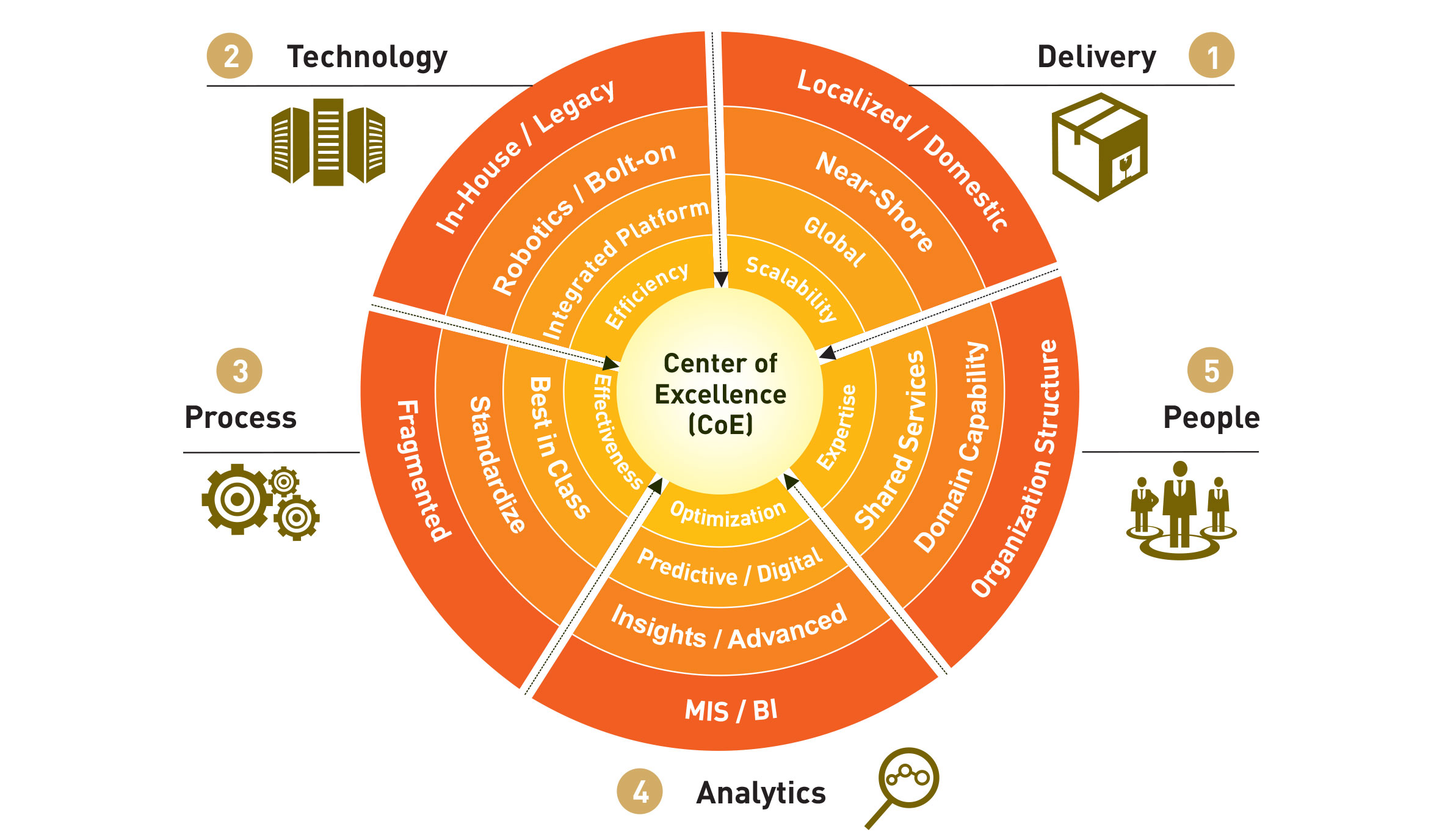In the midst of a dynamic shift from sellers’ to buyers’ market, the Banking, Financial Services and Insurance (BFSI) industry needs to continuously address the challenges of margin pressures, digital transformation and increasing regulatory requirements. Demographics have created seismic shifts in consumer choices, even as the mandate for higher transparency and compliance has intensified. Increased competition from non-traditional players in mature markets place additional pressure to achieve product innovation and differentiated customer service.
BFSI companies clearly need powerful capabilities in the areas of:
-
Opportunity assessment
-
Tracking real-time levels of performance and business health
-
Technologies to address innovation in today’s digitally disruptive environment
-
A well-prepared regulatory readiness
-
Effective operating model
The realities of the BFSI industry for today and the near future make a compelling case for a Center of Excellence (CoE) approach to integrate technology, analytics, robotics and best-in-class people operations.
The Reality & Relevance of CoE
There are three realties that confront the BFSI sector. Digital banking services, analytics, and customizable non-invasive bolt-on solutions have changed customer expectations. The entry of fintech companies into this space poses serious competition to traditional BFSI companies. Business models are also undergoing radical changes as companies compete for market share or ally with digital disruptors.
The second reality is the need for highly-skilled resources with knowledge of niche areas in the BFSI industry such as Finance and Accounting (F&A), Actuarial, Anti-money Laundering (AML), Know Your Customer (KYC), Life and Pension, and Claims.
The third reality is the intense regulatory pressure that compels companies to relook business processes. The restructuring of business models to synchronize customer, market and regulatory demands will need agile and nimble operations designed by domain experts, analytics and technology experts.
What CoE Entails
-
Transform back-office processes to risk-proofed and cost-efficient solutions
-
Agile and continuously renewable transformation
-
Comprehensive project lifecycle management
-
Maximized value in performance, global relevance, security, risk management and innovation
The CoE approach encompasses the simultaneous answer to the need for digital transformation, analytics, machine-learning and bolt-on solutions, thereby changing customer expectations, growth needs and competitive markets. Such a strategy is less labor-intensive, but relates directly to the customer. It enables simple agent and customer experiences with less complexity. It leads the path to innovative and tailored products on simple systems. Most importantly, it can increase collaboration in a cost-optimized manner.
The Five-pronged CoE Strategy
The CoE approach provides leadership, best methods, research and support to bring together domain and industry knowledge, and technology expertise. This can be achieved through the following five-pronged strategy.

 1. Delivery
1. Delivery
A CoE model enables agility to deliver greater and faster change in a cost-effective manner. It helps with the thorough understanding of the customer strategy, reorganizes back-office and IT operations, and maps the most scalable delivery options. Through reusable solutions and frameworks, the CoE can drastically reduce the time-to-market for banking or insurance products, and establish rapid response mechanisms to evolving market requirements
Centralized service centers enable efficient pooling of costs and sharing of resources for maximum revenue generation and savings. This leads to enhanced Return on Investment (RoI). For example, the CoE strategy of a leading U.S. insurance company aligns various technologies to drive performance, applications, business services, and project and portfolio management.
 2. Technology
2. Technology
A CoE approach helps evaluate current systems, technology and design interventions for end-to-end digital transformation. It helps improve efficiencies through bolt-on non-invasive solutions and automation systems. The digital aspect of the CoE provides scalability and system strength to cope with normal tasks, and effortlessly manage demand spikes and peaks. Agile business models and cost structures of a well-designed CoE enable BFSI companies to compete with speedy insights.
 3. Processes
3. Processes
A CoE-led approach builds operational excellence around lean processes and strong process management. Fragmented processes can be identified and streamlined to mitigate gaps and perform to best-in-class standards and benchmarks. By pooling costs, sharing resources and ensuring a consistent digital approach, companies in the BFSI sector can embed end-to-end excellence for effective functional alignment and re-engineering.
For instance, a leading European bank leveraged a CoE approach to centralize its operations across 17 countries. With daily volumes exceeding a million transactions, the bank has streamlined processes for reconciliation, exception management, payment investigation and reporting.
 4. Analytics
4. Analytics
In a data-driven environment, the importance of analytics cannot be overstated. A digital CoE strategy can effectively consolidate data across business units, enhance business intelligence and move companies towards advanced and predictive analytics. It can provide a collaborative platform to enable innovation, share best practices and create awareness regarding emerging opportunities.
For example, a global financial services company based in the U.S. has a service-oriented CoE that promotes global collaboration in the digital domains of marketing, analytics, user experience and strategy.
 5. People
5. People
A CoE strategy can help design efficient structures that quickly identify opportunities. Thus, it can build ongoing and comprehensive end-to-end domain expertise for world-class shared services operations. In short, organizations benefit from better nurturing and retention of niche skills and capabilities.
Ultimately, the CoE framework plays a vital role in driving value for niche customers in the BFSI industry. It enriches the knowledge available within domains and maps it for effective use for customers. It enables banks and insurance companies to attract new clients. However, it is crucial to continually measure the performance of the CoE so that it correctly addresses the right organizational goals and serves as a powerful force for change.